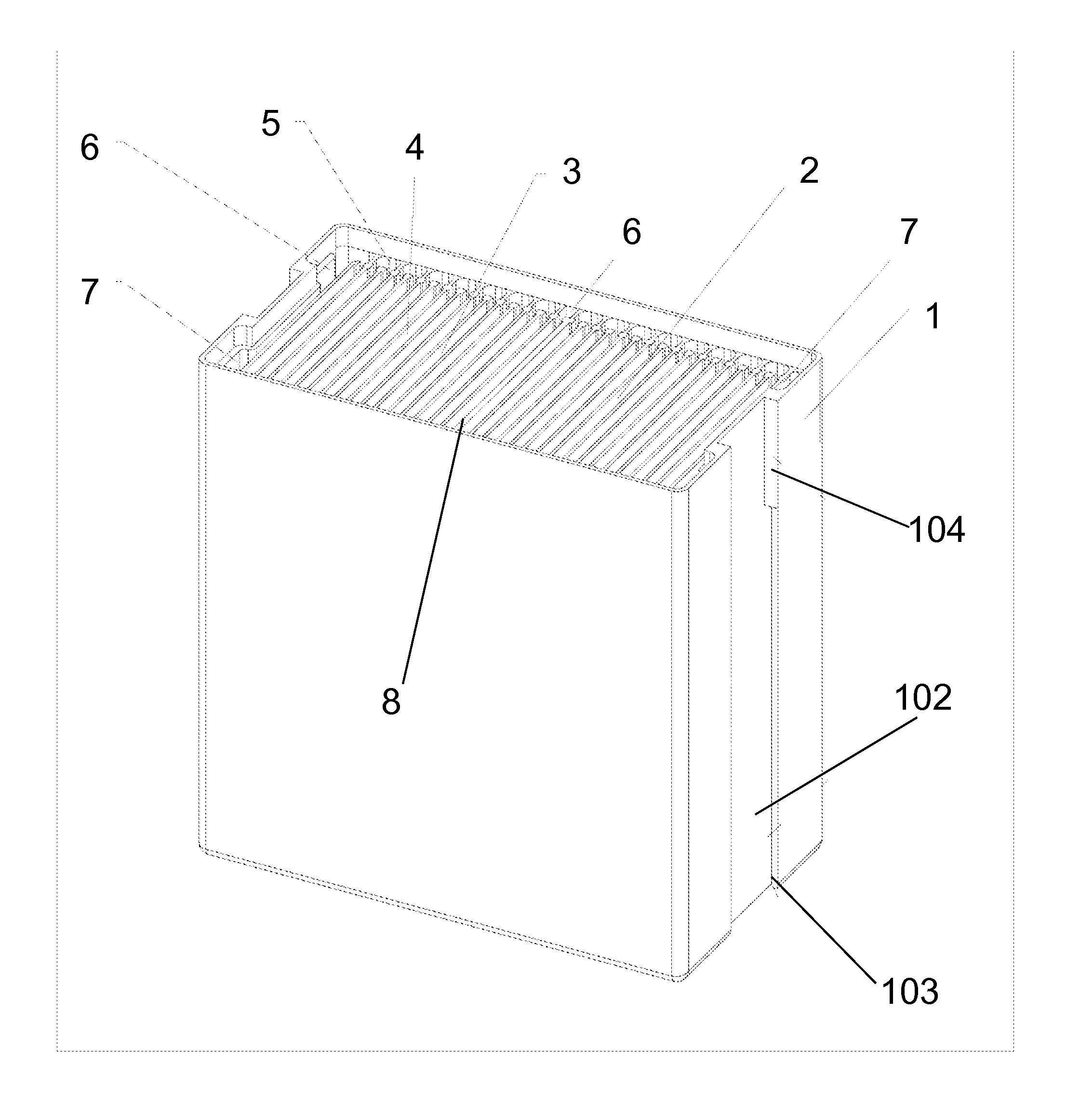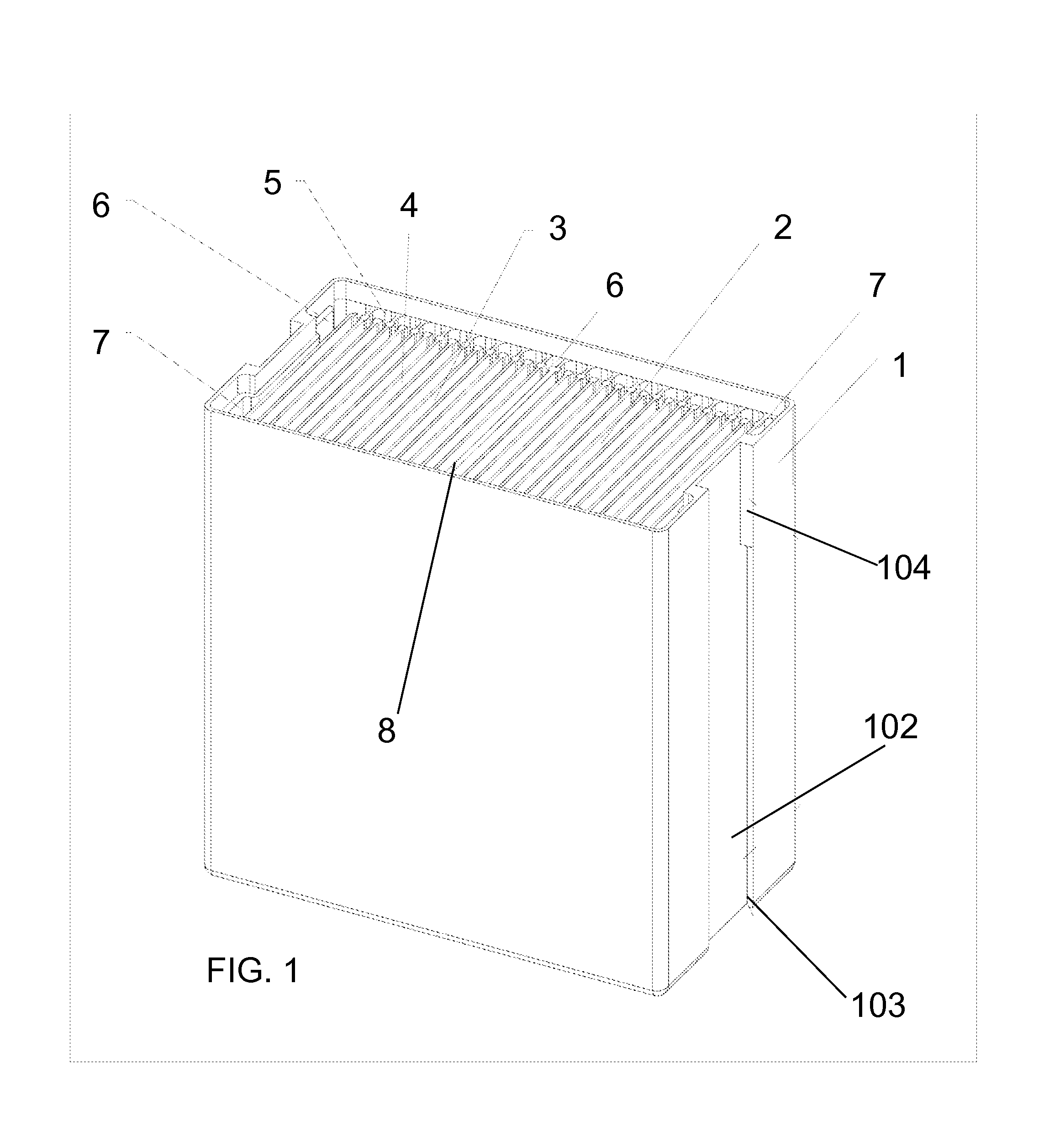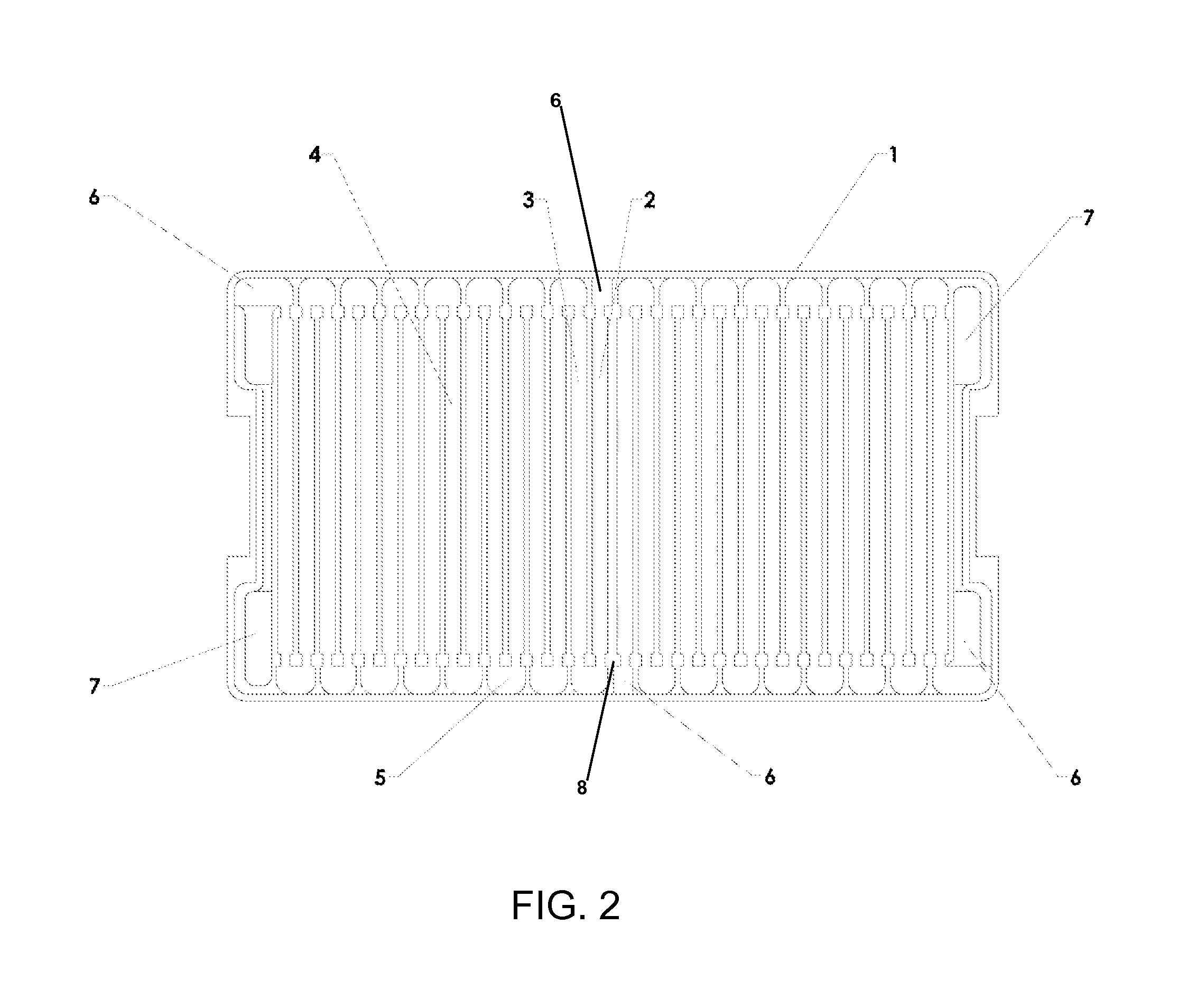Battery structures
a battery and wire technology, applied in the field of batteries, can solve the problems of limited material types, increasing energy requirements, and limited use of wires, and achieve the effects of increasing battery power, maintaining current use times, and long use tim
- Summary
- Abstract
- Description
- Claims
- Application Information
AI Technical Summary
Benefits of technology
Problems solved by technology
Method used
Image
Examples
Embodiment Construction
Synopsis of the Detailed Description
[0037]It is believed that recent improvements and developments in battery chemistry have led to materials that can increase energy storage capacity anywhere from three times up to a theoretical ten times that of the today's best Lithium-ion batteries. The chemistry also allows for far more rapid battery charge times as well. However, some limitations of implementing this new chemistry into current batteries are the conductive limitations of the internal / external wiring, the single-point connections to the internal battery plates, and the surface areas of the connector pins / flats.
[0038]The larger the cross-sectional area of the conductor, the more electrons per unit length are available to carry the current, and, as a result, the resistance is lower in larger cross-section conductors. A common approach to enabling greater current loads is to increase the wire diameter (gauge). However, this solution becomes problematic when replacing batteries with...
PUM
 Login to View More
Login to View More Abstract
Description
Claims
Application Information
 Login to View More
Login to View More - R&D
- Intellectual Property
- Life Sciences
- Materials
- Tech Scout
- Unparalleled Data Quality
- Higher Quality Content
- 60% Fewer Hallucinations
Browse by: Latest US Patents, China's latest patents, Technical Efficacy Thesaurus, Application Domain, Technology Topic, Popular Technical Reports.
© 2025 PatSnap. All rights reserved.Legal|Privacy policy|Modern Slavery Act Transparency Statement|Sitemap|About US| Contact US: help@patsnap.com



